
How To Grow Hot Peppers With Hydroponics
Growing chillies hydroponically can be challenging, but very rewarding. Here we provide an overview of the process, and outline three of the best, beginner-friendly hydroponic systems for growing hot pepper plants.
Growing chillies is an enjoyable and rewarding pursuit. Being fairly easy to grow, they don’t ask too much of you in return for good results.
For those who want a little extra challenge, and feel that they’ve mastered growing hot pepper plants in soil, a hydroponic setup can seem like the natural next step. Hydro grows are highly technical and offer a large degree of control over many variables, particularly nutrients and pH, which in turn can lead to greater control over the final yield provided by your pepper plants.
If set up thoughtfully, a hydro pepper grow can offer fantastic harvests and fast results. If the setup is inferior or goes awry, however, it can be quite difficult to set things right again. Here we investigate growing hot peppers hydroponically, and give you step-by-step instructions on how to do it.
Can you grow peppers hydroponically?
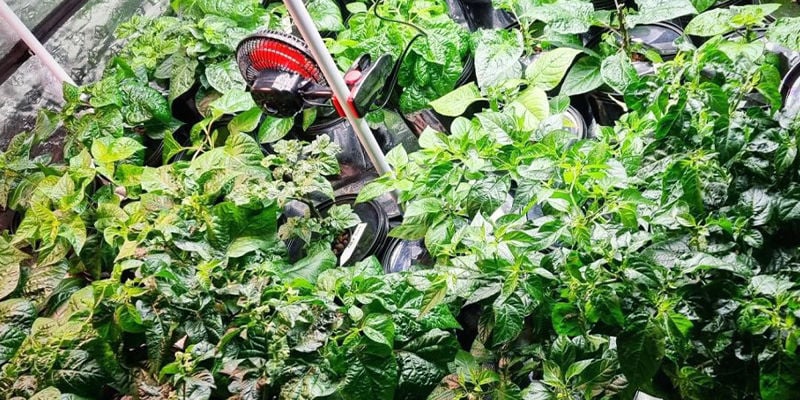
Yes, definitely. Using hydroponic techniques to grow pepper plants is actually a very effective and efficient method. Granted, the setup is a little more complex and expensive compared to growing in soil, but if you like a project, a hydro grow is certainly a good call.
How long does it take to grow chillies hydroponically?
A speedier life cycle is one of the main reasons someone might opt to grow pepper plants hydroponically, rather than in soil. In a soil medium, a chilli plant’s life cycle can be well over 100 days, depending on the strain. In a hydro grow, however, the average life cycle drops to between 50 and 80 days, meaning you can shave a huge amount of time off the growing process.
Why use hydroponics to grow hot peppers?
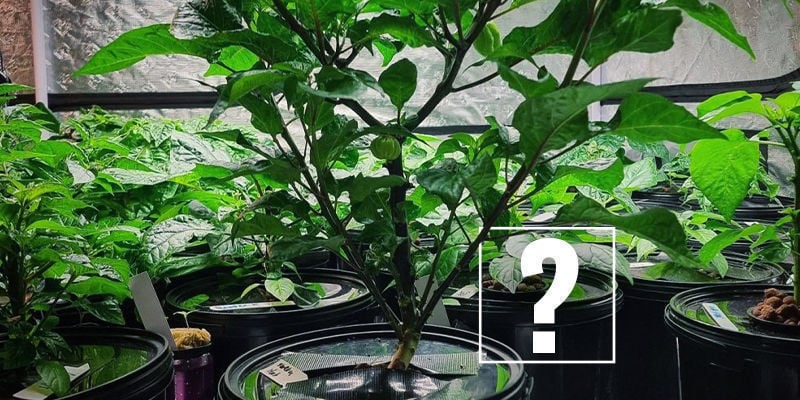
Although we’ve alluded to a couple of the benefits above, here are the main reasons you’d choose to grow hydroponic hot peppers:
- Faster life cycle
- They can be grown year-round
- More economical over time
- Allows you to grow chilli varieties that are unsuitable for growing outdoors in your climate
- Greater control over flavour and heat by adjusting nutrient ratio
- No need to deal with weeds
- No soil-borne pests or diseases
- Total control over the growing environment
Best hydroponic systems for chilli pepper plants
There is no one, single hydroponic system; in fact, there are many. Below we outline some of the simplest, and the most suitable for growing chillies. There are more sophisticated systems out there, but if you’re already at a stage where you’re thinking of using them, you probably don’t need to read this article. So for those seeking something more feasible, here are some systems to consider.
Deep water culture (DWC)
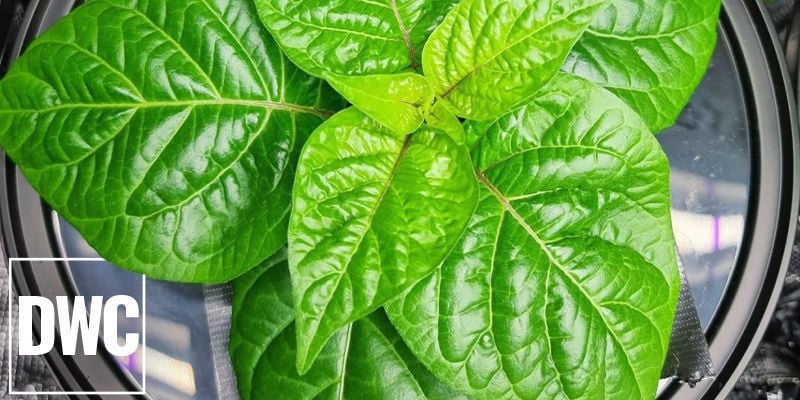
A DWC setup is an absolute favourite for those just dipping their toes into the world of hydroponics.
This system, also known as the reservoir system, is very simple. Just fill a tank, or reservoir, with water, and suspend the plants’ roots in it. You will need to source a pump to continually oxygenate the water, lest the plants drown. As the plants absorb the water, the water level in the reservoir will drop, and it will continually need to be topped up.
As with all hydro setups, an opaque covering must be fitted over the top of the tank, because if light shines onto the water and roots, there’s a very high chance that algae will grow, and this can wreck a crop.
These systems are generally inexpensive and friendly due to their lack of mechanical parts, meaning there’s very little that can become blocked or go wrong.
Wick systems
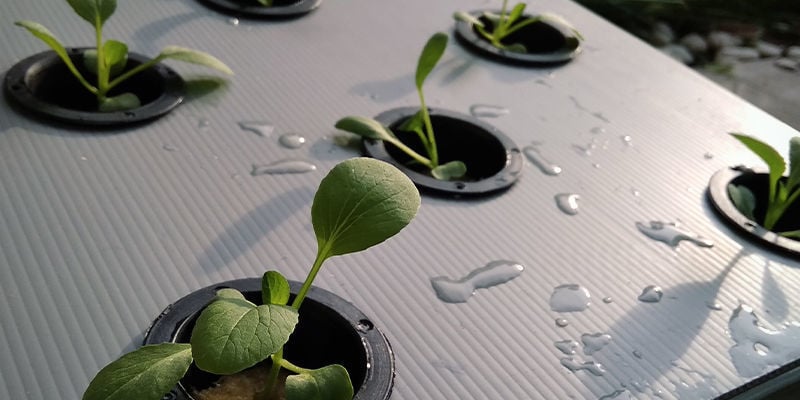
A wick system is another top choice for beginners, and is probably the simplest method out there. However, it also has some drawbacks compared to other methods; for example, it’s unsuitable for growing large or thirsty plants, as the wicks can’t transport water fast enough. Nevertheless, it should work well for most pepper plants.
A wick system draws water up from a reservoir to a soilless medium (in which the plants are held) via a wick. This means you don’t even need a pump to oxygenate the water. As a consequence, this method requires no mechanical parts whatsoever.
Ebb and flow systems
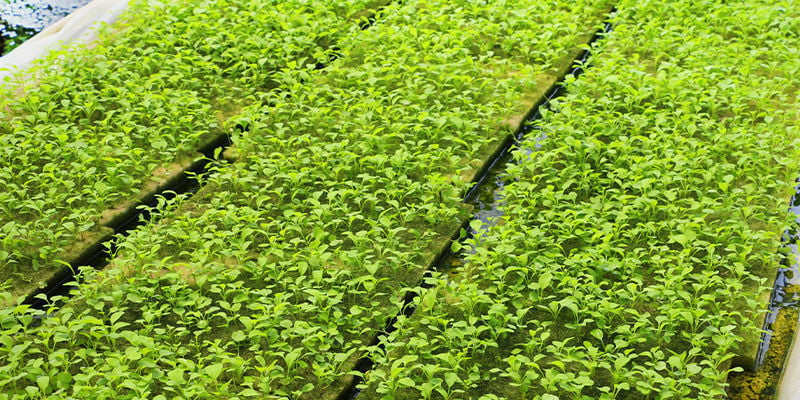
These systems are a little more complex than the previous two, but offer a high degree of control.
Ebb and flow systems flood the inert media in which the plants grow with nutrient solution. This then drains away slowly. The main benefit of this system is you can control how often it floods and drains, meaning you can fully customise the amount of water and nutrients your plants receive. With the other two methods, it’s much more constant.
The downside of this method is that it requires pumps and timers, which, though offering a high degree of control, also require a more complex setup, and higher costs.
How to grow hot peppers with hydroponics
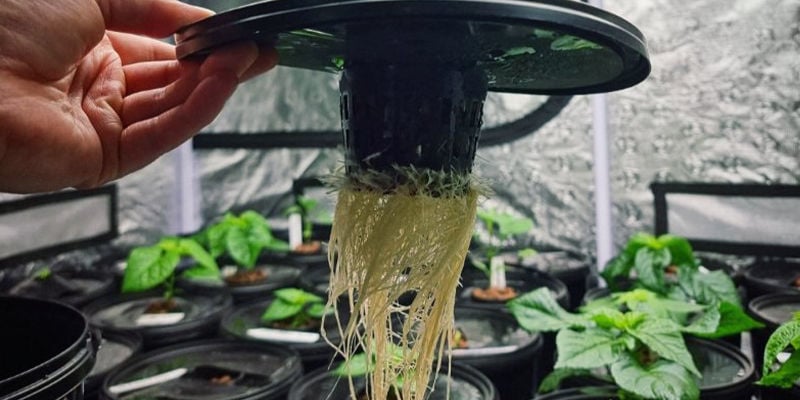
Given the wide variety of hydroponic setups, and the degree of variables involved in growing different types of pepper plants, the following guide is provided as a general outline to guide your pursuits.
-
Germinate pepper seeds. Although hydro growing typically involves using an inert medium to provide support for your plants, germinating seeds in soil-filled seedling trays is usually the easiest route. In any case, you need to achieve healthy seedlings before you can really begin your hydro endeavour.
-
Once your seeds germinate, fill your hydroponic system with water and let it run for a few days.
-
Once the seedlings are a few days old, remove them from their seedling trays. Dip the root balls in water and gently remove all of the soil, until you have loose roots. Be very careful not to damage the roots at this point! It’s better to leave a little soil or media clinging on as opposed to damaging the roots to get it all off.
-
Transplant the seedlings into net pots containing your inert growing medium of choice. Taking one pepper seedling per net pot, plant them a little deeper than they were in the soil.
-
Now, space them around 20cm apart from one another.
-
Set the indoor grow lights 12–20cm above your pepper seedlings and switch them on. Be sure to maintain this distance as the plants grow.
-
Add enough water to keep the system full and fresh. Following manufacturer instructions, add nutrients and adjust pH as required.
-
Once the plants are about 15cm tall, pinch off two or three stem buds and limit branch growth. This will ensure that the energy is directed toward fruit production.
-
Once flowers open, shake your pepper plants 2 or 3 times a week and have a fan constantly blowing over them. This helps with pollination. Without pollination, they won’t produce any fruit.
- Now, just tend to them until they’re ready to harvest!
Growing hydroponic hot peppers: Top tips
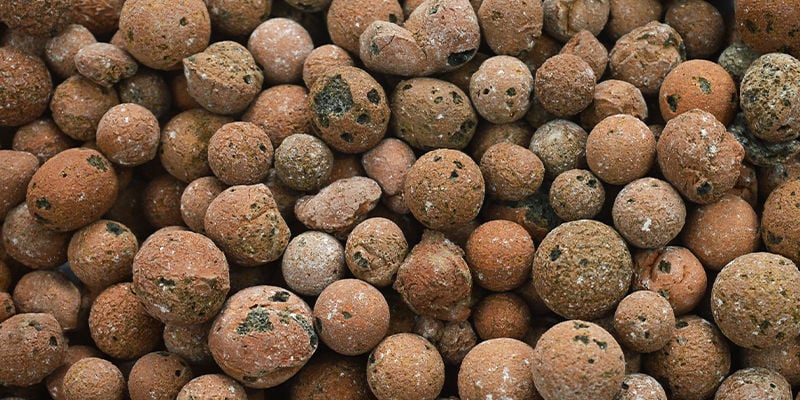
What’s given above is an overview of growing chillies hydroponically, however, there’s much more to it than that. Here are some top tips to give you a better idea of what else is necessary when growing hydroponic peppers.
What’s the best medium for growing chilli peppers hydroponically?
Generally, many people choose to grow pepper plants in mineral wool. This highly porous, inert medium suits hydro setups perfectly as it’s sterile and absorbs nothing. Nevertheless, it provides a good environment for roots to grow. As well as germinating in soil, you could germinate in mineral wool, aka Rockwool, cubes.
Note: Rockwool is suited to ebb and flow and wick systems, but less so to DWC.
Alternatively, baked clay pellets can be used, as these are totally pH-neutral and don’t require adjusting. Baked clay pellets are the medium of choice for those suspending their plants in a DWC reservoir.
What’s the ideal temperature for growing chillies?
For germination, around 26°C is suitable, with very high humidity.
For the rest of their lives, a daytime temperature of 24°C is best, with a slightly cooler nighttime temperature of 18°C. These are just average numbers, though—each variety of chilli will have its optimal temperature range.
As a general rule, chillies like pretty warm conditions, and they definitely don’t like being too cold. Anything below 10°C is uncomfortable for hot pepper plants.
Which chilli varieties are best for a hydroponic grow?
Pretty much all varieties of chillies can be grown hydroponically, though perhaps it’s worth selecting those that would take significantly longer to grow in soil. But ultimately, it’s up to you!
What pH level is best for growing chillies hydroponically?
A pH between 5.5 and 6.5 will work for growing chillies. Staying around 6.0 is optimal, and is suitable for all stages of the chilli plant’s life cycle.
Growshop
From flowers and herbs to vegetables and fruits, get your hands on some of the finest seeds and products courtesy of our Plantshop.
Growing chillies hydroponically: Is it worth the fuss?
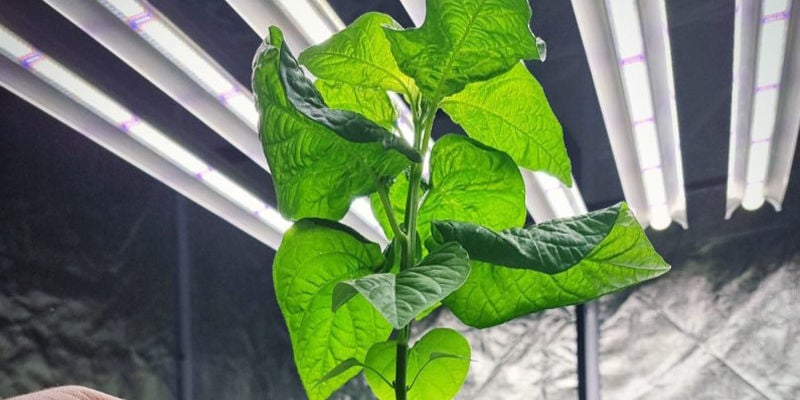
We think so, yes. But it’s only worth it if you can really commit. With a soil grow, you can somewhat leave a plant to its own devices, with just a little watering and feeding, and it should still yield fairly good results.
With hydroponics, however, you can’t afford to be passive. Your system will regularly require maintenance and adjusting, and any issues need to be fixed immediately, as they can damage your plants very rapidly. Therefore, growing peppers hydroponically is best suited to the highly motivated.
If you are, you’ll be rewarded with a faster life cycle, large harvests, and fine-tuned chillies that taste just how you want them to!
-
 5 min
September 5, 2022
How To Overwinter Pepper Plants
Overwintering your chilli plants keeps them alive for another season, increasing yield and growth speed come next harvest. A fascinating process with great results, learn how to overwinter pepper...
5 min
September 5, 2022
How To Overwinter Pepper Plants
Overwintering your chilli plants keeps them alive for another season, increasing yield and growth speed come next harvest. A fascinating process with great results, learn how to overwinter pepper...
-
 5 min
July 21, 2022
The Best Grow Lights For Hot Peppers
Growing chillies is great fun. For those living in less-than-ideal climates, or who want to grow chillies all year round, this means moving plants inside during the colder months. In this case,...
5 min
July 21, 2022
The Best Grow Lights For Hot Peppers
Growing chillies is great fun. For those living in less-than-ideal climates, or who want to grow chillies all year round, this means moving plants inside during the colder months. In this case,...
-
 8 min
March 18, 2022
How To Grow Hot Peppers Outdoors
There's nothing quite like having your own supply of spicy hot peppers. And while it may seem a daunting task to grow them outdoors, we're here to show that it's really not! All you need to do is...
8 min
March 18, 2022
How To Grow Hot Peppers Outdoors
There's nothing quite like having your own supply of spicy hot peppers. And while it may seem a daunting task to grow them outdoors, we're here to show that it's really not! All you need to do is...
-
 5 min
March 7, 2022
How To Fertilise Hot Pepper Plants
There is a fine art to providing your plants with all the nutrients they need. Here's a breakdown of why and how to use fertiliser to maximise the potential of your pepper plants. Trust us; your...
5 min
March 7, 2022
How To Fertilise Hot Pepper Plants
There is a fine art to providing your plants with all the nutrients they need. Here's a breakdown of why and how to use fertiliser to maximise the potential of your pepper plants. Trust us; your...











 United States
United States









